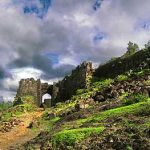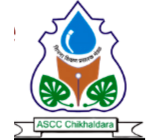About Chikhaldhara

Chikhaldara is the sole hill resort in the region assumed to be the ‘Nandanvan’ of Vidharbha, is situated at an altitude of 1118m with highest Vairat point 1188m and has the added dimension of being the only coffee-growing area in Maharashtra. Chikhaldara has an annual rainfall of 154cm. Temperature varies from 39°C in summer to 5°C in winter. The place has a rich variety of flora and fauna with the nature’s beautiful architecture spread all over the region. Featured in the epic of the Mahabharata, this is the place where Bheema killed the villainous Keechaka in a herculean bout and then threw him into the valley. It thus came to be known as Keechakadara-Chikhaldara is its corruption.
Location of Chikhaldara in Maharashtra and India
| Chikhaldara Hill Station Coordinates |
21.21°N 77.72°E |
| Chikhaldara Hill Station Country |
India |
| Chikhaldara Hill Station State |
Maharashtra |
| Chikhaldara Hill Station District(s) |
Amravati |
| Chikhaldara Hill Station Population |
4718 (2001) |
| Chikhaldara Hill Station Time zone |
IST (UTC+05:30) |
| Chikhaldara Hill Station Elevation |
1,118 m (3,668 ft) |
History
Chikhaldara was discovered by Captain Robinson of the Hyderabad Regiment in 1823. The Englishmen found it particularly attractive because the lush green hue of the place reminded them of England. When the leaves fell in September/October, they were reminded of autumn in England. There was even a proposal to make it the seat of the Government of India.
How to Reach
Chikhaldara is well connected to the cities of Paratwada, Amravati, Akola, Betul, Khandwa and Burhanpur by road. The nearest airport is Nagpur: 229 km via Paratwada-Chandur Bazar-Katol route and 231 km via Paratwada-Amravati-Kondhali route. MSRTC plies buses from Nagpur to Chikhaldara via Amravati-Paratwada. Closest railway station is Bandera at 110-km on Central Railway branch line.
Best Time to Visit Chikhaldara Hill Station:
Cool windy climate of Chikhaldara makes it an admirable place to relax in summer. And best time to visit Chikhaldara is from October to June.
Flora & Fauna
The area is rich in wild mammals including Tiger, Panther, Sloth Bear, Wild Dog, Jackal, Hyena, Chausinga, Sambar (largest Deer on earth) Gaur, Barking Deer, Ratel, Flying squirrel, Cheetal (type of Deer), Nilgai, Wild Boar, Langur, Rhesus Monkey, and Macaque. Also found here are 25 types of fishes and many varieties of butterflies.Crocodiles were re-introduced in a systematic manner in March 1990 and February 1991 in Siddu Kund in Gadga river near Dhakna and Hathikund in the Dolar river in the Gugamal National Park. The best season for visiting the park is from March to June.
Tourist Attractions in Chikhaldara Hill Station
- Museums
- Waterfalls (Dharkhura,Bakadari,Muktagiri)
Chikhaldara Tourist Points
- Bhimkund (Kitchakdari)
- Vairat Devi
- Sunset Point
- Bir Dam
- Panchbol Point
- Kalapani Dam
- Mahadev Mandir
- Semadhoh Tiger Project
- Hariken Point
- Mozari Point
- Prospects Point
- Devi Point
- Monkey Point
- Goraghat
- Shakkar Lake
- Malviya and Sunrise Point
- Government Garden
- Museums
- Waterfall
- Dharkhura
- Bakadari
- Muktagiri
Gugamal National Park
The Gugumal National Park, Amravati, Maharshtra is one of the most well known national parks in the state of Maharashtra. Maharashtra is home to a wide variety of rare animals and birds, including the tiger, crocodile, bison, gawa, neelgai, wild deer, sambar and a host of migratory birds. There are numerous wildlife reserves in the state, which offer wonderful opportunities to watch rich and diverse wildlife amid natural settings.
The Gugamal National Park was built in 1974, and the park spreads over an area of about 1673.93 square kilometers. Located in Chikhaldara and Dharni Tehsils of Amaravati District in the Satpura Hills of Maharshtra, Gugamal is famous as one of the last remaining habitats of the Indian tiger species in Maharashtra.
The Melghat Tiger Reserve, of which the Gugamal National Park, forms the core part, came to be designated as a Sanctuary in 1975, in view of the ecological, floral and faunal significance of the region.
The forest in rugged and hilly area of Melghat is typical Southern dry deciduous forest. There are 750 species of plants in the area. There are 90 tree species, 66 shrub species, 316 herb species, 56 climbers, 23 sedge species and 99 grass species. Approximately 50-75 more species have been identified and several more are expected to identify in the future at the Melghat Tiger Preserve.
Tectona grandis, Ain, Tiwas, Aola, Lendia, Dhawada, Kusum are the important tree species. Bamboo and Teak is widely spread in the forests. The area is rich in medicinal plants.
Melghat Tiger Reserve
Melghat was declared a Tiger Reserve and was among the first nine Tiger Reserve notified in 1973-74 under the Project Tiger. It is located in northern part of Amravati District of Maharashtra State in India. Tapti River and Gawilgadh ridge of Satpura Range forms the boundaries of the reserve. In 1985 Melghat Wildlife Sanctuary was created.Gugamal National Park which forms the core area of the Reserve, and has area area of 361.28 sq. km. carved out in 1987.
Facilities
- Harshawardhan Hotel
- Satpura Retreat
- Sunrise Cottage
- Green Valley Resort
- Melghat Resort
- Mtdc Resort
- Surya Hotel
- Utkarsha Hotel
- Utkasha Resort
- Green Valley Resort
- Resort Mayura
- MTDC Holiday Resort Chikhaldara



